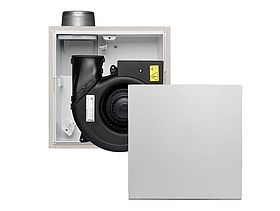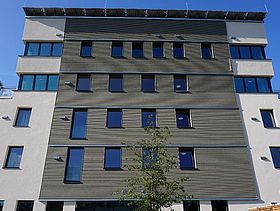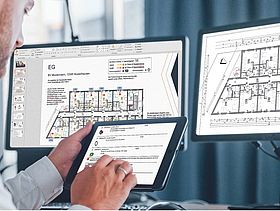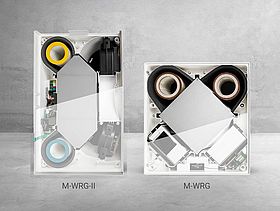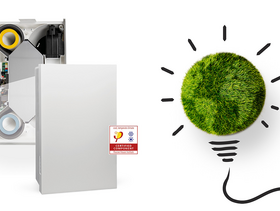Comfort ventilation in the summer
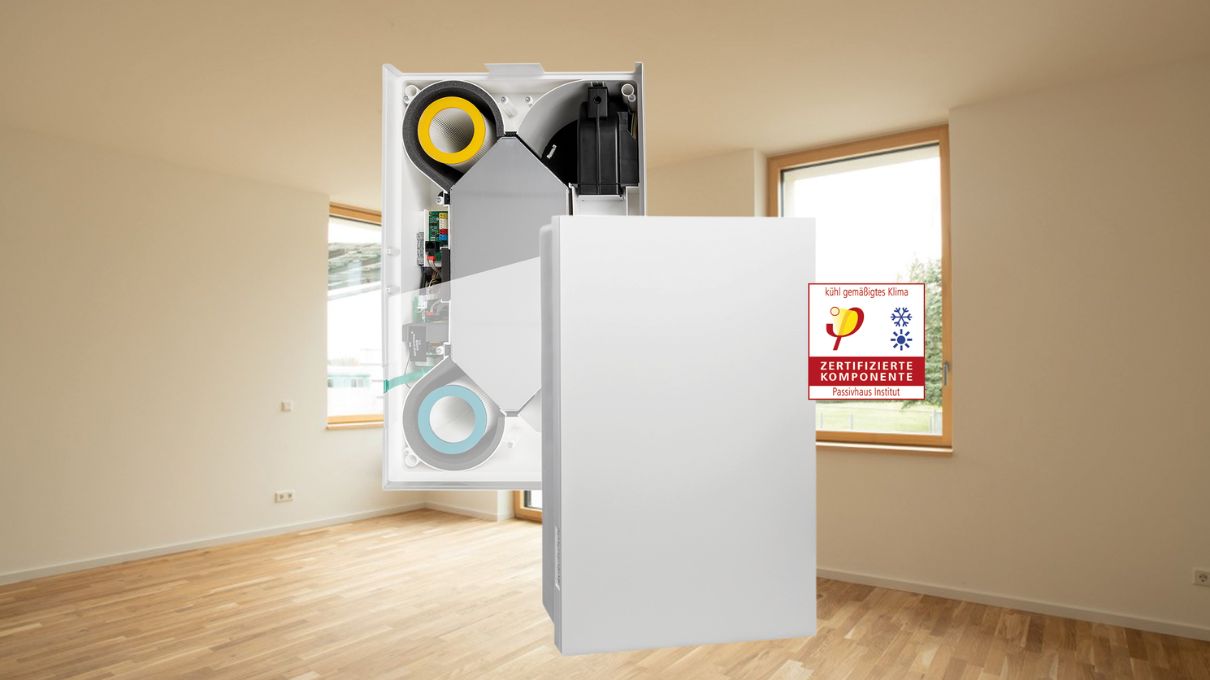
Fresh air and pleasant room temperatures
In hot summers, the air inside the building heats up quickly to an uncomfortable temperature. The building must then be cooled and ventilated at night when the external temperatures are lower. However, with the comfort ventilation units from Meltem, the pleasant coolness can be kept in the room for longer.
The principle of heat recovery with the comfort ventilation system is based on the energy-efficient exchange of heat between the ambient air (extract air) and the outdoor air (supply air). The air flows are routed through separate air ducts into a sophisticated system of fins inside the cross-counterflow heat exchanger. So they do not come into contact with one another, preventing the mixing of extract air and fresh air from outside. The warm extract air gives up its heat to the fresh, effectively filtered supply air.
On the other hand, on hot summer days when the outdoor air is warmer than inside, this process is reversed. In this case, the supplied warm outdoor air is cooled with the extracted cooler ambient air. This reversed effect causes the living space to remain comfortably cool temporarily.
The comfort ventilation units can also be used for cross-ventilation at night, which is preferable to opening the window, especially for residents with noise or pollen sensitivity. The ventilation units are set so that only supply air or only extract air runs at a higher level after a given time. The heat recovery is thus switched off. If the units are set differently (supply air only / extract air only), cross-ventilation can be generated in which the cool outdoor air flows in and the warm, used extract air is removed.
The comfort ventilation system is the perfect supplement to a room air conditioner. While the room is actively cooled by the air conditioner, the ventilation unit supplies the interior rooms with fresh air. Because cold air is not the same as fresh air. With the passive recovery of the cooler air temperature by the heat exchanger, in combination with an air-conditioning unit, the power consumption of both can be greatly reduced over the course of the day.


